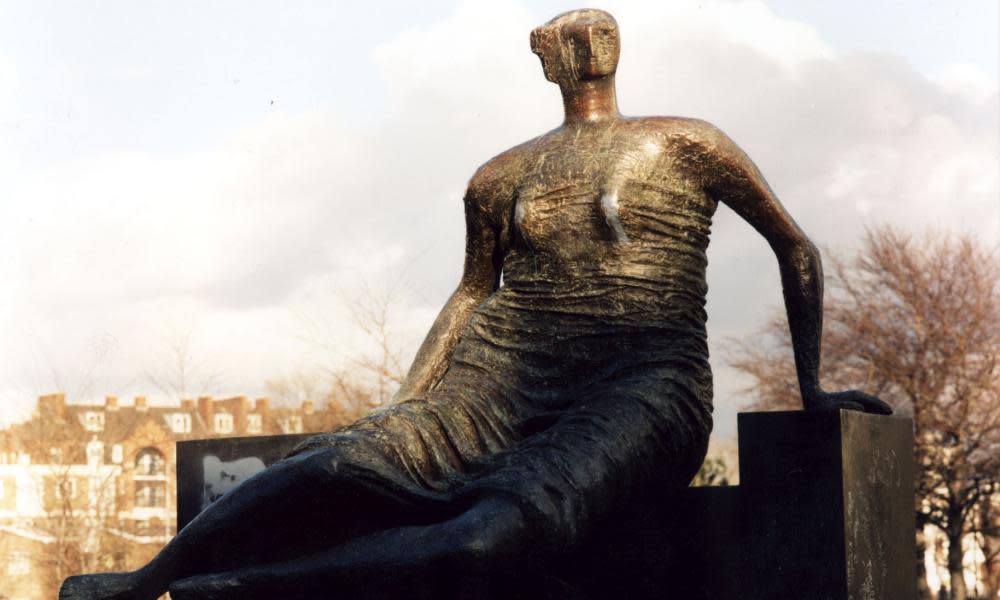'Old Flo' makes her way back to London from Yorkshire

An enormous Henry Moore bronze sculpture gifted at cost price to the east London borough of Tower Hamlets in 1962 is finally coming home – although not quite to a place its maker would have imagined.
Draped Seated Woman, affectionately known as “Old Flo”, was for 35 years located on the Stifford estate in Stepney. It has spent the past 20 years on rural retreat at Yorkshire Sculpture Park near Wakefield, moved there after the Stifford estate was demolished. From the autumn of this year it will take up residence in Cabot Square in Canary Wharf, the council announced on Tuesday.
The decision marks an end to what has been a bitter political battle over Old Flo. In 2012 the disgraced former mayor of Tower Hamlets, Lutfur Rahman, declared that it should be sold to raise £20m because of unprecedented budget cuts.
That sparked all manner of protests and a court battle over who actually owned the sculpture. Tower Hamlets was confirmed as the legal owner in 2015 and the new mayor, John Biggs, pledged to return it to the borough.
The issue has been: where? The vulnerable sculpture, around 2.5m (8ft) tall and weighing 1.6 tonnes, needs to be accessible, but also secure.
A return to a council estate was never on the cards, although there is a certain irony that a work by Moore, a lifelong socialist, is to be sited on such a beacon of capitalism.
Biggs said he hoped Old Flo would eventually move closer to the Tower Hamlets community, possibly at a new civic centre planned in Whitechapel.
“Whilst I would have loved to see Old Flo returned to her old home in Stepney, her considerable value means we have to find her a safe and secure home for the next five years,” he said.
“Canary Wharf will be a great and accessible home for Old Flo, allowing her to once again add to Tower Hamlets’ already enviable reputation as a creative and cultural borough.”
The Yorkshire Sculpture Park’s founder and executive director, Peter Murray, said millions of visitors had enjoyed “this significant and well-loved work” since it arrived in 1997. “We are very grateful to Tower Hamlets for the loan and we are delighted that a new home has been found for the sculpture.”
Those sentiments were echoed by Godfrey Worsdale, director of the Henry Moore Foundation. He said: “Like Henry Moore himself, the foundation is committed to the artist’s work being seen and enjoyed by as many people as possible, and we hope that this new home will introduce Moore’s work to new and diverse audiences.”
Three organisations put in bids to provide a home for up to five years. Canary Wharf Group was chosen, the council said, because of the security that could be offered, as well as it being an area of high footfall and “visible to the people of the East End on a 24/7 basis, as Henry Moore originally intended”.
Sir George Iacobescu, chairman and chief executive of Canary Wharf Group, said he was honoured that “Tower Hamlets have allowed us to host this exquisite piece of art on the Canary Wharf estate. It really is something very special to connect with our wider community and we look forward to the arrival of the sculpture later this year.”
The Tower Hamlets statue is one of seven casts that were made of the completed sculpture. Other versions are scattered around the world including the campus of the Hebrew University of Jerusalem, the National Gallery of Victoria in Melbourne and the Wuppertal swimming pool in Germany.

 Yahoo News
Yahoo News 